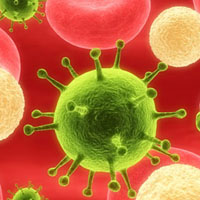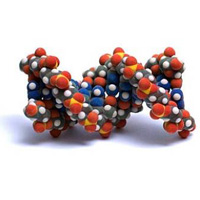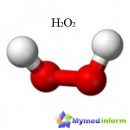What is an acute intermittent porphyry? What are the symptoms of this ailment? How this disease is diagnosed? Answers to these questions you will find in this article.
Content
 Porphyria or porphyrine disease - almost always a hereditary impaired pigment exchange with an elevated content of porphyrins in the blood and tissues.
Porphyria or porphyrine disease - almost always a hereditary impaired pigment exchange with an elevated content of porphyrins in the blood and tissues.
This disease, charming cases of which served as the basis for the legends of vampires. Its most common look is acute intermittent porphyria (OPP).
Possible causes of acute intermittent porphyria
Most often, the disease is detected during the exacerbation period, which can be induced by many factors. The most common are the following:
- Medicinal preparations (including oral contraceptive means);
- Contact with kernels (for example, C / Economic Fertilizers);
- Violation of the hormone profile in women in premenstrual
- period or during pregnancy;
- sharp change in the nature of nutrition, starvation;
- infectious diseases;
- stressful situations;
- Acceptance of alcohol.
The most first description of the acute attack of porphyry was associated with the use of sulfonal. To date, the most common drug drugs - inducers of acute flow of the disease - are analgesics, sulfonamide and barbituatural preparations.
All patients and hidden media, as well as clinicians, facing acute porphyria, must have a list of drugs, safe and unsafe for use in acute porphyria. Every year, these lists are updated and published by the Swedish center of Porphyria.
Since another very common factor provoking the disease is hormonal, then this fact explains more frequent manifestation of acute porphyria in women in comparison with men.
Summing up the experience of researchers engaged in acute porphyms, give the most characteristic clinical symptoms of this disease:
- abdominal pain, as a rule, in the epigastric or right iliac regions;
- bakeful character, sometimes are permanent;
- ongoing several hours or days;
- nausea, vomiting;
- constipation, less often - diarrhea;
- persistent sinus tachycardia (up to 160 beats per minute);
- hypertension;
- Muscular Athony (addresses more often the muscles of the limbs and belt);
- pain in limbs, head, neck and chest;
- loss of sensitivity (most expressed in the shoulder and femoral regions);
- The defeat of the cranial brain nerves;
- violation of pelvic functions;
- Motor disorders in the form of sluggish paresis and paralysis;
- Breath paralysis;
- insomnia;
- severe concern;
- depressive and hysterical components;
- confusion of consciousness and disorientation;
- visual and auditory hallucinations;
- tonic-clonic convulsions;
- mania;
- coma;
- epileptic seizures;
- increased photosensitivity;
- Change of pigmentation.
Diagnosis of disease
Based on the listed symptoms, you can make the following conclusion. Ostly Porphyria can suspect from any patient entering the clinic with an unexpected abdominal (parotid) pain, peripheral neuropathy or with impaired psyche. Moreover, in each individual case, there may be either a whole set of listed symptoms, or only some of them.
In addition, the peculiarity of this pathology is such that as a result of polysindrosis of its clinical manifestations, patients can enter the hospitals of various profiles, where many specialist doctors turn out to be attracted to the treatment process.
Often patients with acute attacks of porphyry are held by multi-stage nucleons on various departments of the clinics, including surgical, urological, gynecological, neurological and psychosomatic.
In the absence of a proper diagnosis, the illness does not rarely have the following sad end: nausea and vomiting, unbearable severe abdominal pains, the absence of a chair and peristaltics mistakenly suggest the idea of acute surgical pathology.
With incorrect diagnosis and, consequently, treatment, sharp porphyria are fatal diseases (mortality, on average, is 60%).
On the contrary, clear timely diagnosis and adequate therapy save almost all patients returning them to normal full-fledged life.









